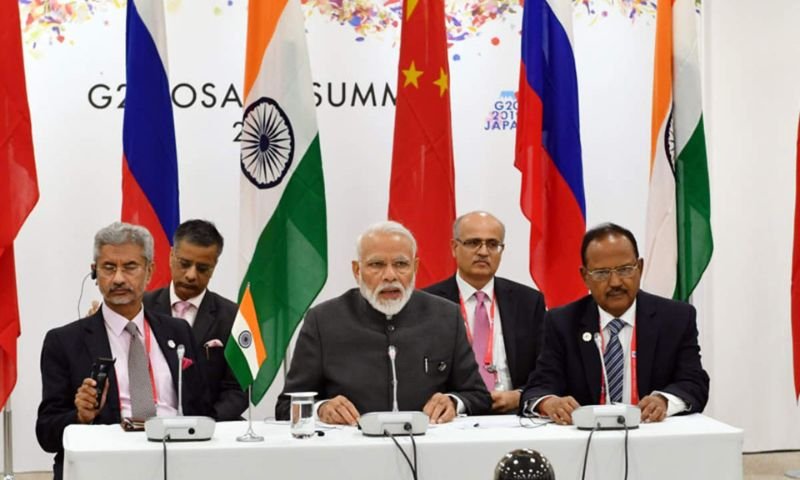Mirza Abdul Aleem Baig
In the post-Cold War world, both Non-Aligned Movement and anti-colonialism became less relevant as the common link between Global South countries. In recent years, the Global South has gained significant international attention, with major countries formulating strategies centered around it.
According to Foreign Policy magazine, a key trend in 2023 has been the rising influence of the Global South, which is emerging as a powerful and confident global player.
The Munich Security Report 2023 also highlights this shift. As a crucial force for change in the international system, the Global South is playing a vibrant role in upholding multilateralism, fostering an open global economy, advancing climate governance, and driving international cooperation on key global issues.
On August 17, 2024, India took a bold step on the global stage by organizing the 3rd Voice of Global South Summit, joined by leaders and ministers of 123 countries, a significant diplomatic initiative aimed at bringing together developing countries from across Africa, Asia, and Latin America.
The summit was intended to provide a platform for these nations to collaborate on critical issues such as promoting trade, inclusive development, progress on the Sustainable Development Goals (SDGs), financial debt, food insecurity, climate change, and global governance.
India’s leadership in this endeavor underscored its aspiration to be a leading voice for the Global South, a group of countries that often feel marginalized in global affairs. However, the summit was marked by the conspicuous absence of two key regional players – China and Pakistan.
This decision to exclude two of its immediate neighbors raised eyebrows and sparked debate about the implications for regional diplomacy, India’s neighborhood first policy, and role on the global stage.
The exclusion of China and Pakistan from the summit can be understood in the context of India’s complex and often contentious relationships with these countries.
India’s relationship with China has been particularly fraught in recent years, largely due to longstanding border disputes, especially in the Himalayan region.
Tensions between the two countries escalated dramatically after the Galwan Valley clash, which resulted in casualties on both sides and significantly soured bilateral relations.
In light of these tensions, India may have perceived China’s presence at the summit as potentially disruptive, fearing that it could overshadow the voices of smaller nations that the summit aimed to amplify.
Pakistan, too, was left off the guest list, and the reasons are similarly rooted in a history of conflict and mistrust.
The relationship between India and Pakistan has been characterized by decades of hostility, primarily centered around the Kashmir issue and CPEC.
Given these deep-seated tensions, did India likely see Pakistan’s participation as a potential obstacle to the constructive dialogue it sought to foster among other developing nations?
It may be assumed; the summit was designed to amplify the voices of countries in the Global South that often feel sidelined by the dominance of larger powers.
By excluding China, India may have sought to create a space where these nations could discuss their issues without the influence of more powerful country.
Does this approach align with India’s broader strategy of positioning itself as a leader among developing nations, advocating for their interests on the global stage, or else “Contain China” policy?
Nevertheless, while India’s concerns are understandable, the decision to exclude China and Pakistan may have been a missed opportunity for regional diplomacy.
As an emerging voice in the Global South, India has a unique opportunity to foster greater cooperation and dialogue among its neighbors, even those with whom it has contentious relationships.
By inviting China and Pakistan to the summit, India could have opened new avenues for diplomatic engagement, providing a platform to address regional issues in a multilateral setting.
The inclusion of China and Pakistan in such a significant summit would not only have demonstrated India’s commitment to regional stability but also underscored its willingness to lead by example in promoting dialogue and cooperation, even with adversaries.
In doing so, India could have taken a step towards easing tensions and building trust with its neighbors, which is crucial for long-term peace and stability in the region.

As India continues to aspire to a larger role on the global stage, it is essential to recognize that regional harmony is a key component of its strategic interests.
The exclusion of neighboring countries risks deepening divisions and could undermine India’s efforts to present itself as a unifying force in the Global South.
By taking a more inclusive approach in its diplomatic initiatives, India can reinforce its role as a leader in the region and contribute to the broader goals of peace and development.
The Voice of Global South Summit was undoubtedly a commendable effort by India to bring together developing nations and address shared challenges.
However, its impact could have been even greater with the inclusion of all regional stakeholders. As India looks to the future, it should seize opportunities to lead by example, demonstrating that true leadership lies in building bridges rather than walls.
By inviting all regional neighbors, including China and Pakistan, to future summits, India can strengthen its diplomatic ties, enhance regional cooperation, and solidify its position as a leading voice for the Global South.
In an increasingly interconnected world, fostering dialogue and cooperation with all neighboring countries – regardless of past conflicts – will be essential for achieving sustainable development and addressing the global challenges that lie ahead.
*The author is a CAS-TWAS President’s Fellow at the University of Science and Technology of China (USTC).
**The opinions in this article are the author’s own and may not represent the views of The Diplomatic Insight. The organization does not endorse or assume responsibility for the content.
Established in December 2008, The Diplomatic Insight is Pakistan’s premier diplomacy and foreign affairs magazine, available in both digital and print formats.



